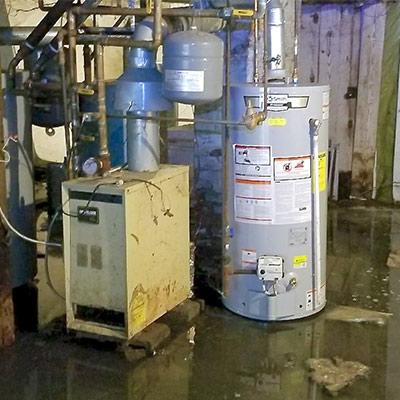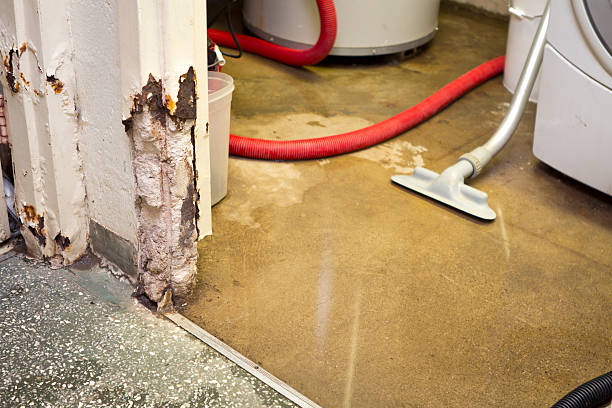On this page down the page you'll find a bunch of sensible data around Broken Water Heaters.

Whether it lies in the cellar or a separate space, broken water heaters can trigger stress. A conventional device holds 80 gallons, so an overnight leak will cause a flooding. This causes major home damages with drenched wall surfaces and also floorings. Besides, having no warm water supply is additionally troublesome. If you are handling these issues, keep in mind of the following:
Turn Off Source Of Power
Before calling the plumber, shut down a gas hot water heater by transforming the temperature dial. This is usually situated on top of the thermostat. Change off the circuit breaker if you have a design that runs on electrical power. This will certainly protect against electrocution, specifically if there is a leakage as water is a conductor. Generally, the heating element shuts off when the water hits a specific temperature level. Yet with a busted container, it may malfunction. Sufficing off guarantees you stay safe.
Cut Off the Cold Water Supply
Cut off the storage tanks tap water supply from the resource. When your storage tank is in good problem, the cool water stops loading up when the storage tank is full. If you can not discover it or reach it, you have to transform off that primary water supply line outside your residential property.
Call the Plumber
After doing the very first two security steps, you should call your plumber to come right away to repair a burst water heater. There are usually signs that your aging water heater has sediment buildup in the interior.
Do not await significant flooding to call the plumber. By then, you will have to invest more to restore your residential or commercial property. Rather, as soon as you spot these indicators, have a professional involved evaluate your hot water heater say thanks to. Usually, water heaters have a life-span of regarding 8 to 12 years. With regular inspection as well as maintenance, you can extend its life.
Tidy up Residential or commercial property
After calling the plumber, record damage by remembering and also images so you can claim your house owner's insurance policy. From there, begin the prompt cleanup. Secure any kind of essential belongings to prevent additional saturating. After that, remove any standing water to avoid mold as well as mildew development. If you have a completely submersible water pump, make use of that to drain the water. Otherwise, the conventional pail method will also work. Attempt to mop out everything, consisting of baseboards as well as walls. Keep them running to maintain air flowing if you have an electric fan as well as dehumidifier. This will aid hinder mold development.
Keep in mind, if you observe any problems with your hot water heater, call the pros right now. You can not take this issue lightly because a defective thermostat can raise water temp to an alarmingly high level, leading to unintentional burns. A damaged heating unit pressure relief valve can additionally trigger an explosion. For ideal outcomes, get an annual check so your system gets checked, cleaned, drained pipes, and also filled up, assuring optimum performance.
Whether it is situated in the basement or a separate area, damaged water heating systems can trigger anxiety. Prior to calling the plumber, closed off a gas water heating unit by turning the temperature level dial. After doing the very first 2 safety and security actions, you must call your plumber to come right away to fix a fractured water heating unit. If you have a submersible water pump, utilize that to drain pipes the water. Remember, if you notice any concerns with your water heating system, call the pros right away.
8 REASONS YOUR HOT WATER HEATER IS NOT WORKING & HOW TO FIX
Water Heater Problems & Solutions
Loose or Damaged In-Line Valve
Unlike a water leak near the bottom of your water tank, a water leak on top of your system can be easily fixed. A common cause of water tank leaks includes a loose in-line valve. This is a handle that is located at the top of the water tank that is engineered to activate or deactivate the flow of water. To fix this problem, you will need to secure the nut that holds the ball or in-line valve in its location. If the leak becomes more severe once it is tightened, you will be required to travel to your local hardware store to purchase a new in-line valve for your water heater.
Damaged Pressure Relief Valve
Most types of water heaters are equipped with a pressure relief valve that is engineered to discharge pressure from the water tank when it becomes too high. If this valve on top of your water heater begins to leak, we recommend purchasing a new one online or from your local store. The process of removing and replacing pressure relief valves is not complicated.
No Warm Water
If you have an electric water heater in your home, the most typical cause of a lack of warm water is a broken heating element. Your water heater is equipped with two heating elements that are tasked with heating incoming water in the water tank. Once a heating element begins to malfunction, you will have little to no hot water to use for showering, cleaning, and laundry.
Low Supply of Hot Water
Are you continuously running out of warm water? This issue may be a byproduct of a cracked dip tube. This tube is engineered to push cold water to the base of your water tank to be heated. Once a crack or hole begins to form in the dip tube, the incoming supply of cold water may be released near the top or middle of your tank. As a result, the cold water on top of the tank will be sent to the faucets and showers in your house. This hot water heater problem can only be fixed by replacing the dip tube on your system. Since the process of installing a new dip tube is complex, we recommend calling a certified technician for help.
A low supply of warm water may also be a signal of excess sediment buildup in your water tank. As your water heater reaches the middle of its life cycle, minerals in water including magnesium and calcium will begin to collect at the base of the water tank. As the minerals continue to grow, there will be less room in the water tank to store hot water. To resolve this problem, flush your water heater to remove the excess minerals.
Water is Too Warm or Cold
If the water in your shower feels uncomfortable hot or cold, you can adjust the temperature of your water by changing the settings on your thermostat. Setting the temperature to 120 degrees Fahrenheit may help you save money on your utility bills. This is an excellent temperature to use if you’re worried about scalding or skin irritation. Does this temperature feel too cold? You may also adjust the thermostat to 140 degrees Fahrenheit to make your showers more pleasant. If your hot water heater is not working when you change the temperature, this is an indicator of a broken thermostat. Immediately find a certified plumbing or heating contractor in your area to repair or replace your thermostat.
Low Water Pressure
Low water pressure is not always caused by a malfunctioning water heater. If you live in an older home with smaller water pipes, the flow of water will be restricted prior to reaching our kitchen or bathroom skins. The only way to eliminate this hot water heater problem is to connect new ¾-inch water lines to your system. Another type of problem that may negatively impact your water pressure includes calcium deposits in water pipes.
As magnesium and calcium begin to form in your pipes, the diameter of your water lines will become smaller. As a result, the warm water from your water heater will not be able to travel in an efficient manner to your sinks or appliances. Since the process of replacing water pipes includes removing drywall, an average homeowner that does not have a plumbing license will not be able to fix this hot water heater problem.
https://www.wmhendersoninc.com/blog/8-reasons-your-water-heater-is-not-working-how-to-fix/

As a serious person who reads about How to Avoid a Broken Hot Water Heater, I figured sharing that article was a great idea. Feel free to take the time to promote this blog posting if you liked it. Kudos for your time. Please visit our blog back soon.
24-hour service? Dial here.